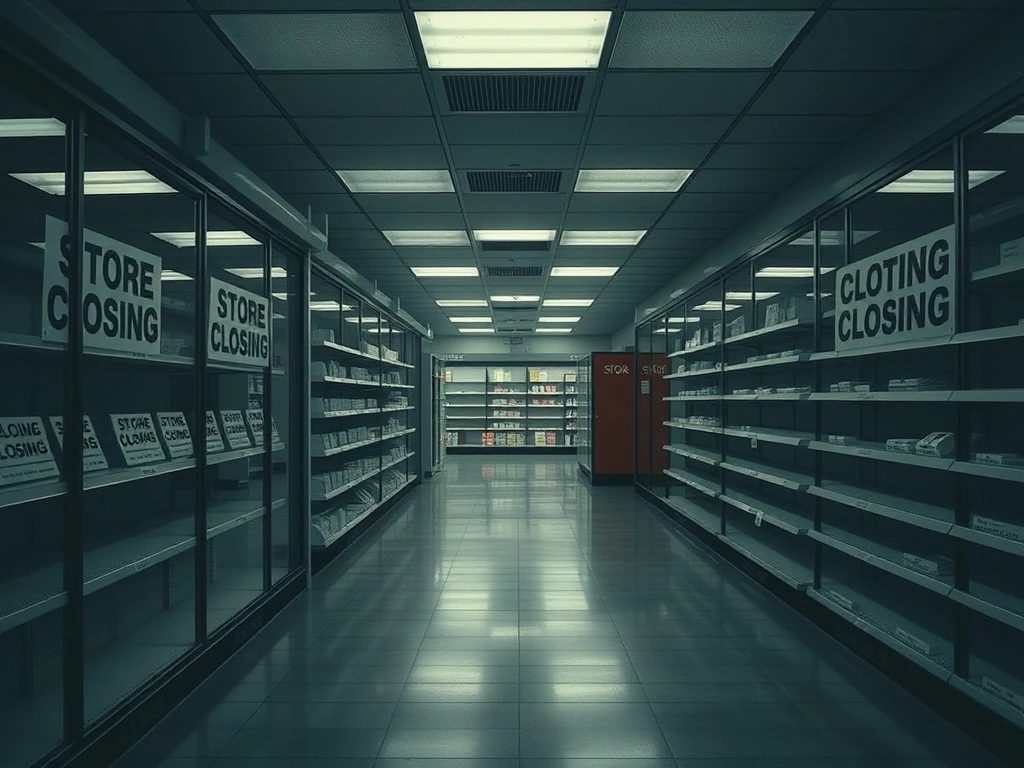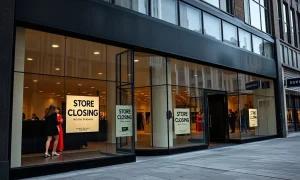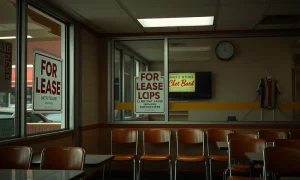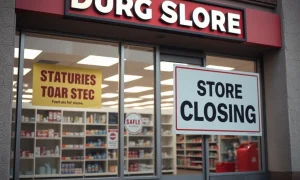The retail landscape constantly shifts. Many businesses face immense pressure. Now, an iconic bankrupt retail chain announces the permanent closure of its remaining stores. This significant event marks the end of an era. It highlights the brutal realities of modern commerce. Businesses and entrepreneurs must understand these shifts. This final **retail chain closure** sends a clear message to the industry. Adaptation is not merely an option; it is essential for survival.
The End of an Era: Understanding Retail Chain Closure
A once-dominant force in the retail sector has ceased operations. This particular **retail chain closure** follows years of financial struggles. The company, known for its extensive product range, served generations of customers. Its stores were once bustling hubs. They offered a wide variety of goods. Shoppers found everything from electronics to apparel. However, the business model failed to keep pace with changing consumer habits. Online shopping gained significant traction. This shift presented an insurmountable challenge. The chain filed for bankruptcy protection several years ago. Despite restructuring efforts, it could not regain profitability. Its physical footprint began to shrink. Many stores closed their doors previously. The final announcement confirms the complete dissolution of the company.
The Road to Bankruptcy: Financial Challenges Faced
Several factors contributed to this dramatic **retail chain closure**. First, the company struggled with significant debt. This debt accumulated over years of expansion. Second, it faced intense competition. Aggressive pricing from online retailers proved challenging. Furthermore, discount chains offered lower prices. Third, the chain failed to innovate its in-store experience. Many physical locations felt outdated. They did not offer the modern amenities consumers expected. Fourth, its supply chain became inefficient. This led to higher operational costs. Finally, the company’s online presence remained underdeveloped. It could not effectively compete in the digital marketplace. These combined pressures ultimately led to its downfall.
- High operating costs due to large physical stores.
- Inability to adapt to e-commerce growth.
- Heavy debt burden from past expansions.
- Intense competition from online and discount retailers.
Impact of the Final Retail Chain Closure
The consequences of this extensive **retail chain closure** are far-reaching. Thousands of employees will lose their jobs. Many worked for the company for decades. Their livelihoods are now uncertain. Local communities will feel the economic impact. Store closures leave large, vacant retail spaces. These empty buildings can depress property values. They also reduce local tax revenues. Consumers lose a familiar shopping destination. For some, it represents a nostalgic part of their past. Suppliers also face challenges. They must now find new buyers for their products. This ripple effect demonstrates the interconnectedness of the economy.
Lessons from This Retail Chain Closure
This major **retail chain closure** offers critical lessons for the entire industry. Businesses must prioritize agility. They need to embrace digital transformation. An omnichannel strategy is no longer optional; it is a necessity. Retailers must integrate online and offline experiences. Furthermore, companies need to manage debt responsibly. Over-leveraging can quickly become a death knell. Understanding consumer behavior is also vital. Preferences evolve rapidly. Brands must stay attuned to these changes. They need to offer compelling value propositions. This could involve unique products or superior customer service. Finally, experiential retail is gaining importance. Stores must offer more than just products. They should provide memorable experiences.
The Broader Landscape: Future of Retail After Major Retail Chain Closure Events
The retail sector continues to evolve rapidly. This recent **retail chain closure** is part of a larger trend. Many traditional brick-and-mortar stores struggle. However, new models are emerging. Experiential retail focuses on creating engaging environments. Pop-up shops offer flexibility. Direct-to-consumer (DTC) brands bypass traditional retail entirely. Technology plays a crucial role. Artificial intelligence (AI) enhances personalization. Data analytics informs business decisions. Automation streamlines operations. The future of retail likely involves smaller, more specialized stores. These stores will complement robust online platforms. They will prioritize convenience and unique experiences. Ultimately, only adaptive and innovative businesses will thrive.
The final curtain call for this iconic bankrupt retail chain serves as a stark reminder. The retail world is unforgiving. Innovation, financial prudence, and customer-centricity are paramount. While sad for those directly affected, this event also paves the way for new opportunities. It forces the industry to re-evaluate its strategies. The spaces left behind may become homes for new, dynamic businesses. This ongoing transformation will reshape how we shop and interact with brands.
Frequently Asked Questions (FAQs)
What does a retail chain closure mean for the economy?
A **retail chain closure** often leads to job losses, vacant commercial real estate, and reduced tax revenues for local communities. It can also disrupt supply chains and impact the suppliers who relied on the chain for business.
Why do iconic retail chains go bankrupt?
Iconic retail chains often go bankrupt due to a combination of factors. These include failing to adapt to e-commerce, accumulating significant debt, intense competition from online and discount retailers, outdated business models, and an inability to meet evolving consumer preferences.
How does e-commerce contribute to retail chain closures?
E-commerce provides consumers with convenience, competitive pricing, and a vast product selection. This directly challenges traditional brick-and-mortar stores, which often have higher operating costs and limited inventory. Chains that fail to build a strong online presence struggle to compete.
What are the alternatives for consumers after a major retail chain closure?
Consumers can find alternatives through online retailers, other physical stores (including discount stores or specialty shops), and direct-to-consumer brands. Many new businesses also emerge to fill the void left by closed chains, often offering more specialized or unique products and experiences.
What lessons can other businesses learn from this retail chain closure?
Other businesses can learn the importance of digital transformation, adopting an omnichannel strategy, prudent financial management, and continuous innovation. Understanding and adapting to changing consumer behaviors is crucial for long-term survival in the dynamic retail market.
























